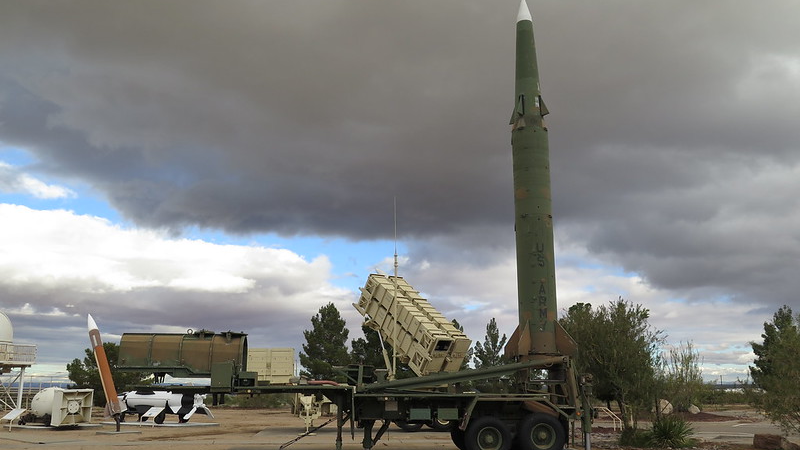
Why might the deployment of INF-range missiles in Europe be counterproductive?
By Doniyor Mutalov, MALD 2025 Candidate, The Fletcher School
In a joint statement with Germany, the United States announced that it will redeploy its long-range missile capabilities in Europe starting in 2026 to bolster NATO and European defenses. The deployment will include ground and air-launched missiles, Tomahawk and SM-6 cruise missiles, respectively, but also hypersonic weapons currently in the development and testing phase.
This is significant because previously, all ground-based missiles with a range between 500 km and 5500 km were prohibited under the Intermediate-Range Nuclear Forces Treaty (INF Treaty) of 1987, which was the first arms control accord with inspection provisions.
The Trump administration withdrew from the INF Treaty in 2019, citing formally Moscow’s noncompliance with the pact and its development of the 9M729 Novator (SSC-8 in NATO classification) ground-launched cruise missile. That being said, allegations were also leveled during the Obama administration, but a decision was made to uphold the agreement. Interestingly, in 2019, then National Security Advisor John Bolton suggested that the accord’s bilateral nature, which did not account for third-party capabilities, be it Chinese or North Korean, was the most significant motive for ending the INF.
Moscow tried to brush off these allegations, for example claiming that the missile was just below the limits with a range of 480 km, and even invited military attache from embassies of NATO countries to inspect a missile. However, those efforts did not suffice to preserve the treaty. Since the treaty’s demise, Russian President Vladimir Putin has proposed a moratorium on INF-range missiles in Europe with ‘mutual verification measures,’ but this offer was rejected by NATO countries. However, it is apparent that Russia has not developed or fielded any new INF-range missiles, and the only questionable missile still remains 9M729.
Furthermore, the capabilities of this particular missile were likely exaggerated. In the war that Russia unleashed upon Ukraine in February 2022, the use of 9M729 was surprisingly modest, as most of the missile barrages used long-range air-launched cruise missiles, also known as the Kh-series or the short-range ballistic missiles. Therefore, it is clear that despite the recent calls to develop more INF-range missiles, Russia does not possess numerous numbers, making it prudent to renegotiate the INF Treaty, which should ideally cover the space of the 1990 Conventional Armed Forces in Europe Treaty (CFE) territory.
As Russia continues its war of aggression in Ukraine, it is all but certain that any arms control deal is off the table. Yet, as Ukraine plans to convene the second peace conference before November 2024 and invite Russia this time, there might be a chance that a diplomatic settlement to this conflict could be found as early as this year. If that happens, resurrecting the regional limits of INF may be worthwhile. Otherwise, the redeployment of the U.S. long-range missiles to Germany may result in a second Euromissiles crisis and assure a new arms race, as the range of Tomahawk missiles covers most of European Russia, including Moscow and Saint Petersburg, and may be deemed ‘strategic’, despite their conventional mission. Russia, for its part, has immediately vowed a military response and announced that it will devise proper countermeasures and rethink its unilateral moratorium.
U.S.-Russia nuclear dyad notwithstanding, the military prowess of China has drastically increased in the past decades. As of this year, the United States has already introduced intermediate-range missiles into its territories in the Indo-Pacific, namely Guam, to counteract China’s development of its missile and nuclear programs. China remains unconstrained by any arms control treaty and is even reluctant to implement nuclear risk reduction measures, such as missile test notifications, hotlines, or incident agreements. It is said that were China a party to the INF Treaty, more than 95% of its missile arsenal would violate the agreement and need to be dismantled. Therefore, any placement of INF-range missiles may be more than justified in the Indo-Pacific theater, since China emerged as a relevant third party. No treaty or agreement caps its missile forces, nor does it exercise self-restraint.
What is surprising is that the Biden administration has chosen to counter both countries at the same time by deploying or announcing such deployments within the same year despite notable differences in their force composition. Of course, such a decision runs counter to anyone who believes in chipping away Russia from China in the longer term and helps perpetuate an “alliance of the aggrieved,” in the words of Zbigniew Brzezinski. This counterproductive move will only solidify the convergence of interests between Russia and China. Russia has publicly reacted to U.S. deployments in Asia but has refrained from any action so far. Nonetheless, it may also deploy missiles in Asia, in territories west of the Urals, including Kamchatka and Chukotka, posing risks to the U.S. strategic assets in Alaska. Treating two different cases of China and Russia alike would be a counterproductive move that solidifies the Sino-Russian partnership and elevates the probability of a trilateral arms race.
Lastly, the deployment date is set for 2026, and it is possible that any subsequent administration, including Trump, may reconsider this decision in the years to come. However, most observers would recognize the continuity of national security decision-mak.ing in the United States, and thus, such decisions would not be easy to reverse.
